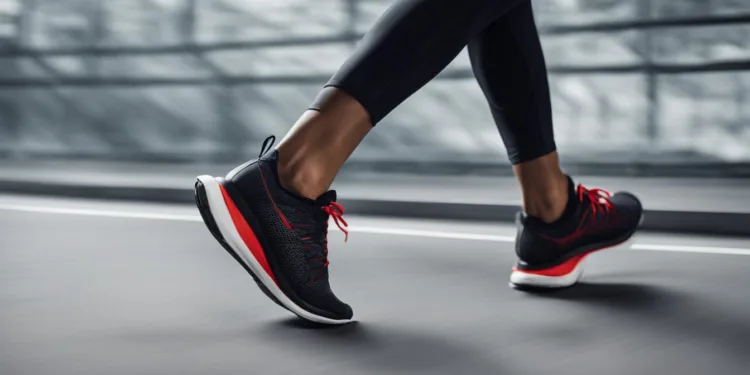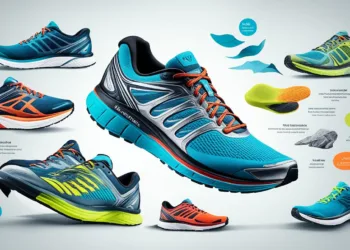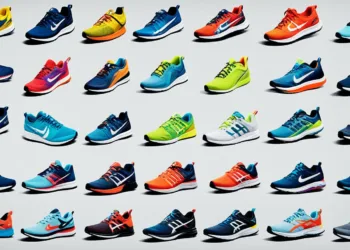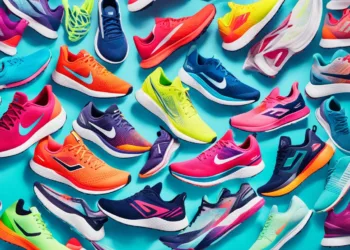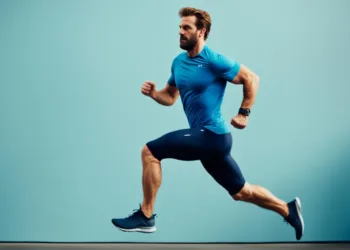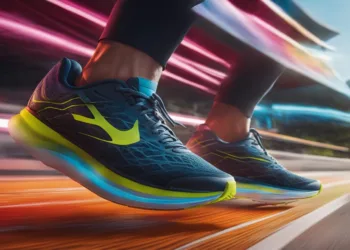Table of Contents
- 1 Understanding Neutral Running Shoes and Their Benefits
- 2 Key Differences Between Neutral and Stability Running Shoes
- 3 Top Features to Look for in Flexible Neutral Running Shoes
- 4 The Art of Selecting the Best Flexible Neutral Running Shoes for Your Feet
- 5 Highlighting the Most Popular Flexible Neutral Running Shoes on the Market
- 6 Why Runners Prefer Flexible Neutral Running Shoes for Long Distances
- 7 Incorporating Technology in Flexible Neutral Running Shoes for Advanced Comfort
- 8 How Flexible Neutral Running Shoes Accommodate Diverse Running Styles
- 9 Price vs. Quality: Finding Affordable Flexible Neutral Running Shoes That Last
When it comes to running footwear, the demand for neutral running shoes is higher than ever. Approximately 85% of shoes on the market fall into this category, making it essential for you to understand whether this type of footwear is suitable for you. Among the popular flexible neutral running shoes, the Nike Pegasus stands out as a notable model. To determine if a neutral shoe is right for you, perform a wet test or consult a specialist at a running store equipped with foot-scanning capabilities. Neutral shoes are generally lighter and feature a simpler midsole/outsole design, providing your feet with plenty of freedom and comfort. Discover the top 10 types.
Key Takeaways:
- Understanding the benefits of neutral running shoes
- Distinguishing neutral shoes from stability shoes
- Identifying top features in flexible neutral shoes
- Guide to selecting the best flexible neutral shoes
- Highlighting popular flexible neutral running shoes
- Preference for flexible neutral shoes in long distances
- Technology enhancing comfort in flexible neutral shoes
- Flexible neutral shoes accommodating diverse running styles
- Finding affordable, lasting flexible neutral shoes
Understanding Neutral Running Shoes and Their Benefits

Neutral running shoes are designed for runners with neutral or slight pronation tendencies, offering a perfect balance of cushioning, support, and flexibility. These shoes allow the foot’s natural inward roll (pronation) and outward roll (supination) without overcorrecting the motion. Lacking excessive stability features, neutral running shoes provide a more unrestricted range of motion that aids in maintaining proper alignment, thus minimizing injury risks due to overpronation or unnecessary movement.
Runners opting for neutral shoes can enjoy a plethora of benefits that cater to their unique needs. Some of the key advantages of wearing neutral running shoes include:
- Optimized cushioning for a comfortable running experience
- Flexible design that adapts to the foot’s natural motion
- Minimal interference with the foot’s biomechanics
- Lighter and more versatile compared to stability shoes
To ensure a perfect match for your feet, consulting with a professional running shoe specialist or podiatrist can result in personalized recommendations that are tailored to your biomechanics and running habits.
“read also: Low Arch Stability Running Shoes“
Finding the Right Balance of Cushioning, Support, and Flexibility
While selecting neutral running shoes, it’s crucial to find a pair that offers the ideal balance of cushioning, support, and flexibility to suit your specific needs. The right shoe should provide:
- Adequate cushioning for impact absorption and a comfortable stride
- Firm yet flexible support that allows for natural foot movement
- Sufficient flexibility to accommodate your foot’s biomechanics
Considering these factors when searching for neutral running shoes will help you choose a pair that benefits your running style and offers maximum comfort and safety while running.
Ultimately, the most effective way to find the perfect pair of neutral running shoes is to try out different models and consult with a professional shoe specialist or podiatrist for personalized recommendations based on your unique biomechanics, arch type, and running habits. Armed with this knowledge, you’ll be well-equipped to make an informed decision and select the best neutral running shoes to enhance your performance and comfort while minimizing injury risks.
“read also: Medial Post Stability Running Shoes“
Key Differences Between Neutral and Stability Running Shoes
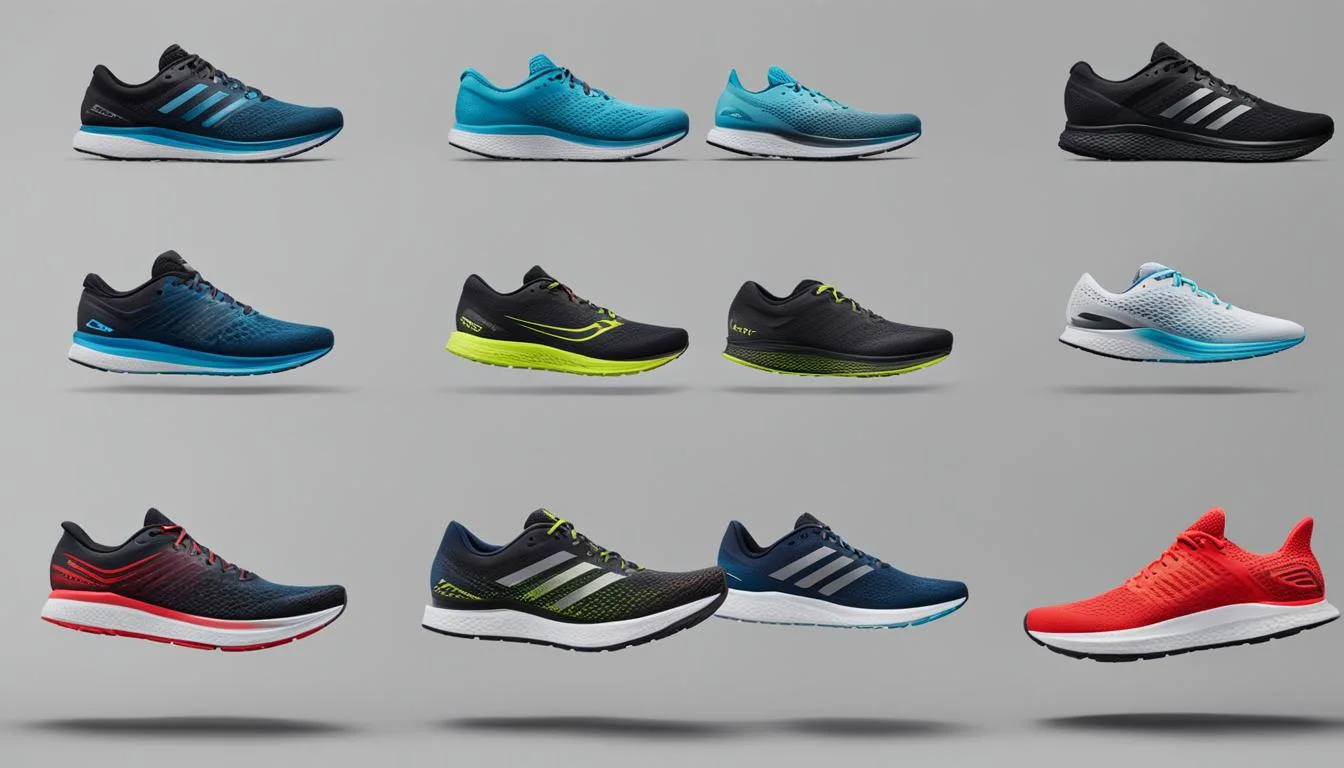
In this section, we’ll explore the significant differences between neutral and stable running shoes, helping you make an informed decision.
What is a Neutral Running Shoe?
Neutral running shoes cater to runners with either neutral pronation or underpronation. They lack the specialized arch support found in stability shoes, focusing instead on providing a lighter structure that encourages unrestricted foot movement. A simpler outsole and midsole design are the key characteristics of these shoes. Approximately 85% of running shoes on the market fall into this type, making them a popular choice for those preferring natural foot mechanics without additional stability mechanics.
Identifying the Need for Stability Features
Stability running shoes are designed specifically for overpronators, who require support to prevent excessive inward rolling of the ankle, leading to pain and injury. However, neutral pronators may not benefit from stability shoes, as they could negatively impact their gait or add unnecessary costs due to unneeded features. To determine if you need stability features, consider evaluating your pronation style and arch type. Simple visual or wet tests can reveal your arch type, which positions you well for either shoe type.
Structured vs Neutral Running Shoes: Making the Right Choice
Choosing between structured and neutral running shoes should primarily consider comfort and injury history rather than relying solely on arch type or pronation. Although these physical factors can guide your decision-making process, they are not supported by scientific research as the sole determining factors for proper shoe selection. Runners are encouraged to seek shoes that provide a comfortable experience and consult with specialists if they have a history of injuries or experience severe discomfort during running.
The following table showcases the most notable differences between neutral and stability running shoes:
| Attribute | Neutral Running Shoes | Stability Running Shoes |
|---|---|---|
| Target Pronation | Neutral or Underpronation; | Overpronation; |
| Support Level | Less supportive, focused on flexibility; | More supportive, focused on structure; |
| Weight | Generally lighter; | Heavier due to added stability features; |
| Outsole and Midsole Design | Simpler, allowing for unrestricted foot movement; | Structured, providing targeted support for overpronators. |
In conclusion, the right choice of running shoes depends on your personal preferences, injury history, and running habits. Analyze these factors, and consult with a professional when in doubt to determine the best fit for your individual biomechanics and running needs.
Top Features to Look for in Flexible Neutral Running Shoes
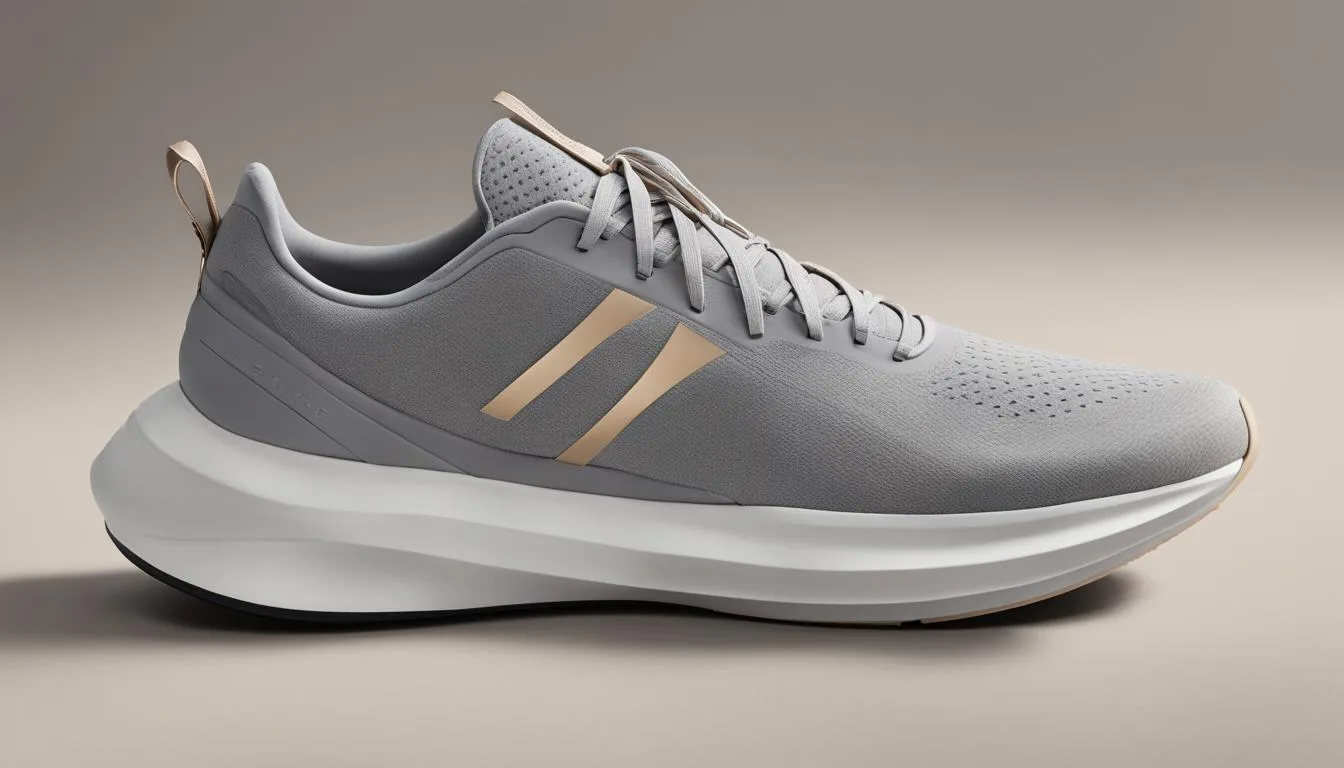
When selecting flexible neutral running shoes, aspects such as cushioning, flexibility, and support are paramount. Ample cushioning, located primarily in the midsole and heel area, is crucial for impact absorption, promoting a smooth, comfortable ride and reducing injury risk. A balanced level of flexibility is vital to accommodate the foot’s natural motion throughout the gait cycle. Support is also integral, although less so than in stability or motion control shoes, to prevent excessive rolling in or out of the foot while still upholding the foot’s natural pronation and supination.
Here are some of the key features to consider when choosing the right pair of flexible neutral running shoes:
- Cushioning: Look for a sufficient amount of cushioning in the midsole and heel areas. The cushioning should be soft enough to absorb shocks while providing a comfortable ride and reducing injury risk.
- Flexibility: Make sure the shoes allow your foot to move naturally during the gait cycle. The shoe should cater to the forefoot flexion while offering decent levels of torsional rigidity.
- Support: Even though flexible neutral running shoes don’t provide strong stability features, they should still offer an adequate level of support for the foot’s natural pronation and supination movements.
- Weight: A lightweight shoe improves your overall running experience by reducing the amount of effort required to lift your foot during each stride. Opt for models that fall within the 8-10 oz. the range for optimal performance.
- Breathability: Ensure that the shoes have superb ventilation features, such as mesh uppers, to keep your feet dry and prevent overheating during long runs.
Additionally, it’s essential to consider your specific running needs when choosing a pair of flexible neutral running shoes. Various factors like running surface, distance, and frequency contribute to the perfect shoe choice for an individual runner.
| Running Surface | Recommended Features |
|---|---|
| Road | Ample cushioning, smooth outsole, lightweight, and breathable design |
| Trail | Extra outsole traction, reinforced upper, slight increase in cushioning, and protective toe guard |
Understanding your personal preferences and running conditions will ensure that you select a pair of flexible neutral running shoes that match your requirements and facilitate an enjoyable, comfortable running experience.
“read also: Guided Stability Running Shoes“
The Art of Selecting the Best Flexible Neutral Running Shoes for Your Feet
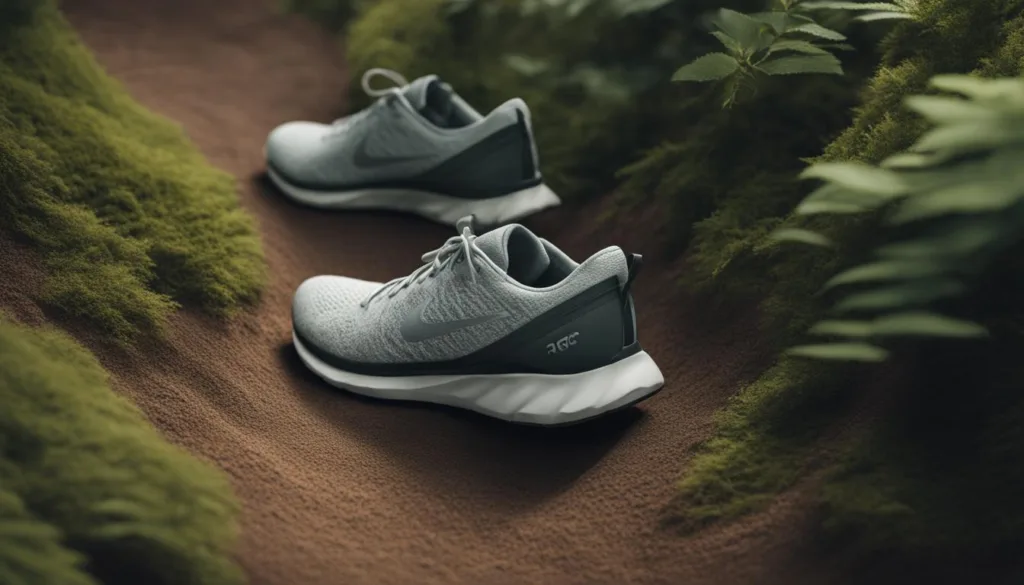
Selecting the best flexible neutral running shoes for your unique needs involves understanding their defining characteristics, the importance of proper fit and cushioning, and versatility across different types of runners. Let’s dive into each of these aspects to guide your search for the perfect pair.
How to Tell if a Running Shoe is Neutral
Neutral running shoes can be determined by examining their weight, structure, and features. Here are some factors to consider:
- Weight: Neutral running shoes are generally lighter than stability models due to the absence of extra stability elements.
- Structure: A simple outsole and midsole design that allows free foot movement is indicative of a neutral running shoe.
- Features: Neutral shoes focus on providing essential cushioning and support without overly restricting foot dynamics, and do not prominently advertise stability elements.
By considering these aspects, you can get a clearer idea of whether the running shoe you are evaluating is a neutral model.
The Importance of Proper Fit and Cushioning in Running Shoes
A well-fitted running shoe with appropriate cushioning enhances comfort and injury prevention. Proper fit and cushioning entail the following:
- A comfortable and secure fit that contours to the shape of your foot
- Cushioning in the heel and midsole for impact absorption
- Reduced force against the foot upon ground contact
Taking the time to find a shoe that meets these criteria will ultimately contribute to a more enjoyable and safe running experience.
Flexible Neutral Running Shoes for Different Types of Runners
The versatility of flexible neutral running shoes allows them to cater to a wide range of runners with varying preferences and objectives. Here are some examples of different types of runners who can benefit from neutral shoes:
| Runner Type | Benefits of Flexible Neutral Running Shoes |
|---|---|
| Road Runners | Smooth and cushioned ride on pavement and other surfaces |
| Daily Trainers | Adaptable to diverse training needs, from tempo runs to long-distance workouts |
| Marathoners | Necessary support, cushioning, and flexibility for long-distance comfort and injury prevention |
As you can see, flexible neutral running shoes provide a balanced combination of cushioning, support, and flexibility, fulfilling the needs of a wide array of runners and running goals. Armed with this knowledge, you’re well on your way to finding the best flexible neutral running shoes that suit your specific preferences and objectives.
“read more: High Arch Stability Running Shoes“
Highlighting the Most Popular Flexible Neutral Running Shoes on the Market
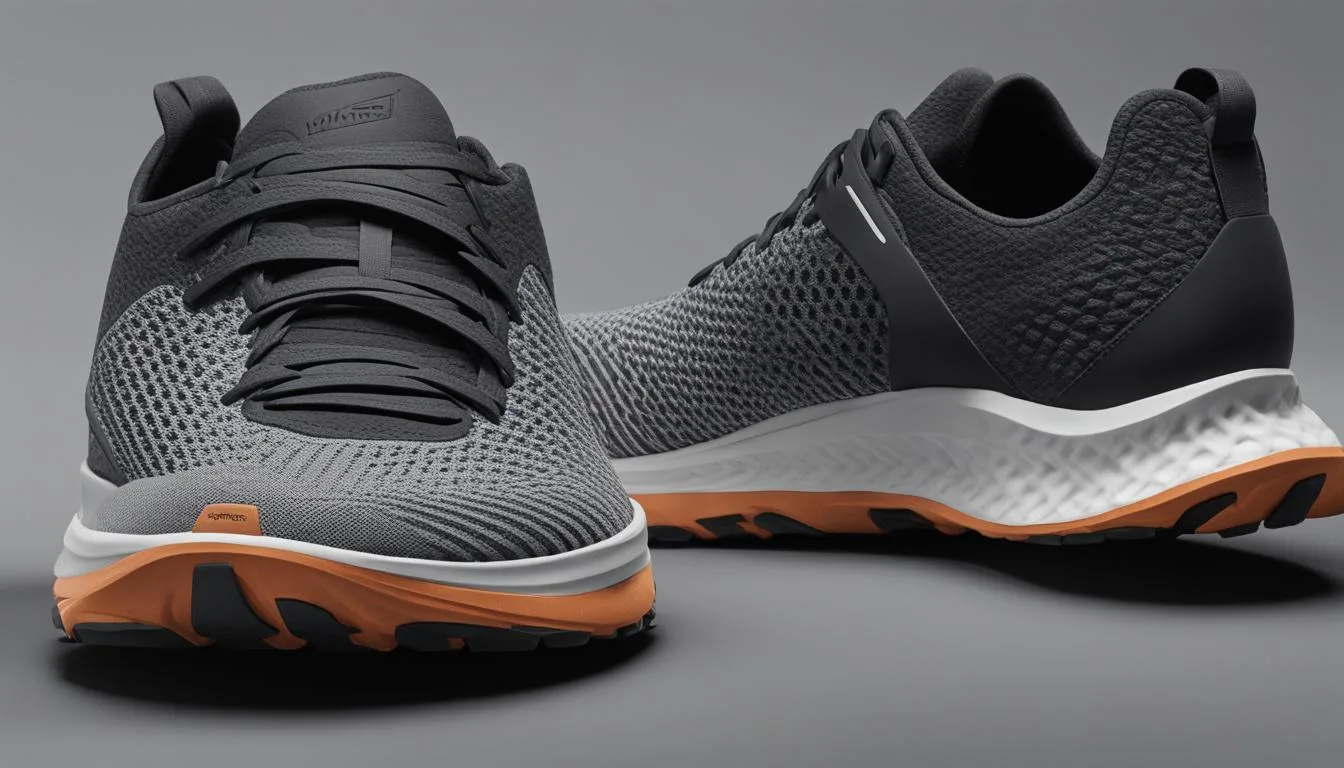
As a plethora of options inundate the marketplace, several standout models have emerged as frontrunners in the neutral shoe category. These models have gained attention due to their exemplary features, striking a balance of durability, cushioning, fit, and responsive performance. The popular flexible neutral running shoes worth exploring include:
- Nike Air Zoom Pegasus 40
- Brooks Ghost 15
- Asics Gel Nimbus 24
- New Balance Fresh Foam X 1080 v12
- Saucony Ride 15
These models cater to a variety of running preferences and activities such as road running, everyday comfort, long distance, speed work, and more. Individual attributes, as highlighted by reviews, contribute to their widespread popularity.
| Model | Unique Attribute | Ideal for |
|---|---|---|
| Nike Air Zoom Pegasus 40 | Redesigned midfoot strap for a better fit | Road running, speed work |
| Brooks Ghost 15 | Responsive cushioning and smooth ride | Everyday comfort, long distance |
| Asics Gel Nimbus 24 | Superior cushioning and shock absorption | Long-distance, marathon training |
| New Balance Fresh Foam X 1080 v12 | Exceptional midsole cushioning | Road running, a variety of activities |
| Saucony Ride 15 | Comfortable fit with ample support | Everyday running, long distance |
By understanding your specific needs and preferences, you can select the ideal flexible neutral running shoe from these celebrated models. Remember, the best shoe for you is the one that not only meets your demands but also makes running a comfortable and enjoyable experience.
“read more: Flexible Neutral Running Shoes“
Why Runners Prefer Flexible Neutral Running Shoes for Long Distances
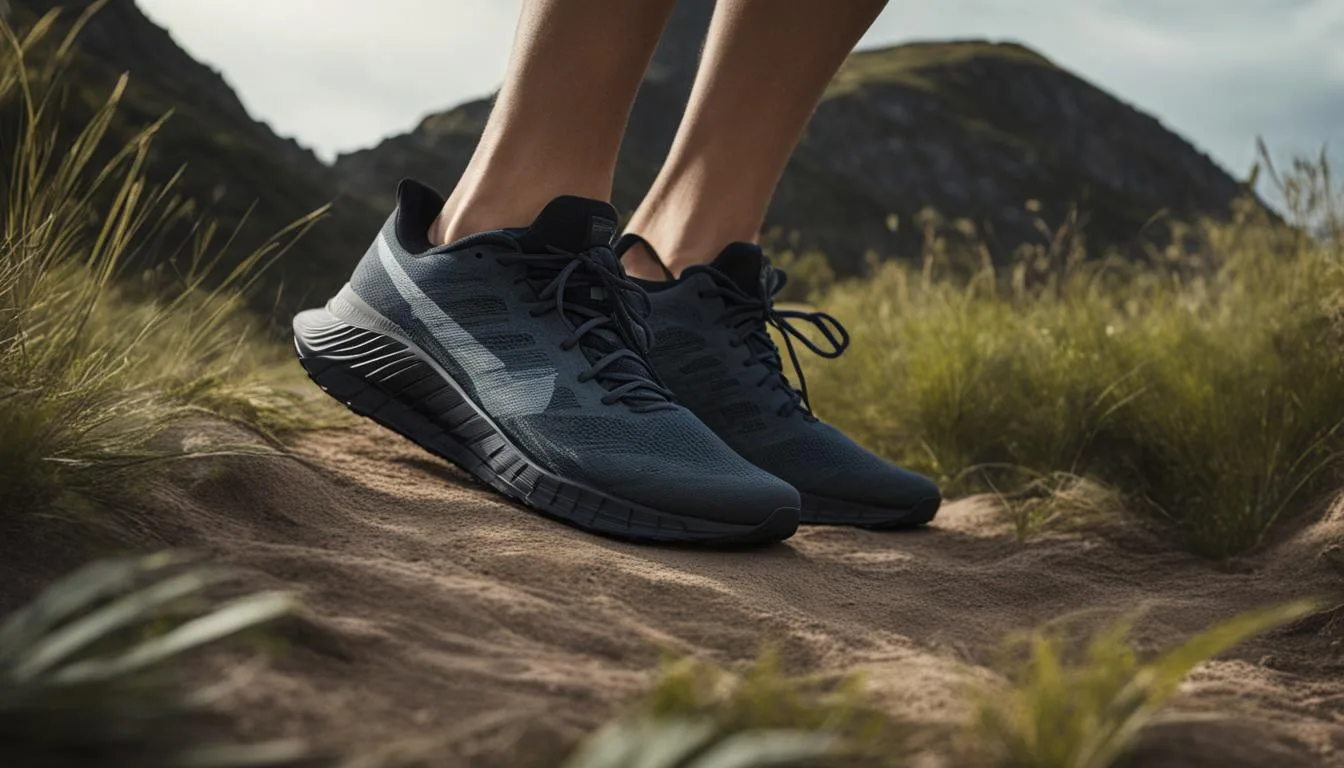
Flexible neutral running shoes have become a popular choice among long-distance runners and marathon trainers due to the endurance and comfort they provide over extended periods. These shoes are specifically designed to offer shock absorption, consistent cushioning, and durability to endure the rigorous demands of marathon training.
Neutral Running Shoes for Marathon Training
Energy return and smooth transition features, such as those found in the Asics Gel Nimbus 24, allow runners to maintain their performance levels from start to finish during marathon training. By ensuring consistent support and comfort throughout the race, these neutral running shoes have become an essential gear for long-distance runners.
Flexible Neutral Running Shoes for Daily Training Needs
For everyday training, runners often gravitate towards flexible neutral shoes that offer versatility, comfort, and adequate support for a variety of training regimens. Top choices for daily wear include the Brooks Ghost 15 and the New Balance Fresh Foam X 1080 v12, both known for their adaptability to different training needs – from road running to cross-training – due to their balanced cushioning and secure fit.
“The ASICS Novablast 3 is a revelation as it proves to be the ultimate neutral running shoe. This lightweight marvel exhibits an energetic ride across different types of runs and luxurious levels of comfort, making it the top for neutral running shoes.” – Jovana Subic, RunRepeat
Durable Flexible Neutral Running Shoes for Enhanced Performance
Durability plays a crucial role when choosing running shoes, as it ensures that runners are getting the most out of their investment. Flexible neutral running shoes deliver on this front, providing enhanced performance through long-lasting construction and material choices that can withstand the repetitive impact of running. Several brands, such as Hoka One One and Salomon, offer shoes renowned for their toughness and high-performance delivery. Hoka’s recovery run shoes and Salomon’s trail-running shoes continue to be praised by the running community for their exceptional durability, regardless of the running environment.
- Asics Gel Nimbus 24: Ideal for marathon training, with energy return and smooth transition features.
- Brooks Ghost 15: Suitable for daily training, providing a versatile and comfortable experience.
- New Balance Fresh Foam X 1080 v12: Offers adaptability to different training needs, such as road running or cross-training.
- Hoka One One: Recovery run options offering durability and high performance.
- Salomon: Trail-running shoes praised for their toughness and ability to perform in various environments.
“read more: Speed Training Road Running Shoes“
Incorporating Technology in Flexible Neutral Running Shoes for Advanced Comfort
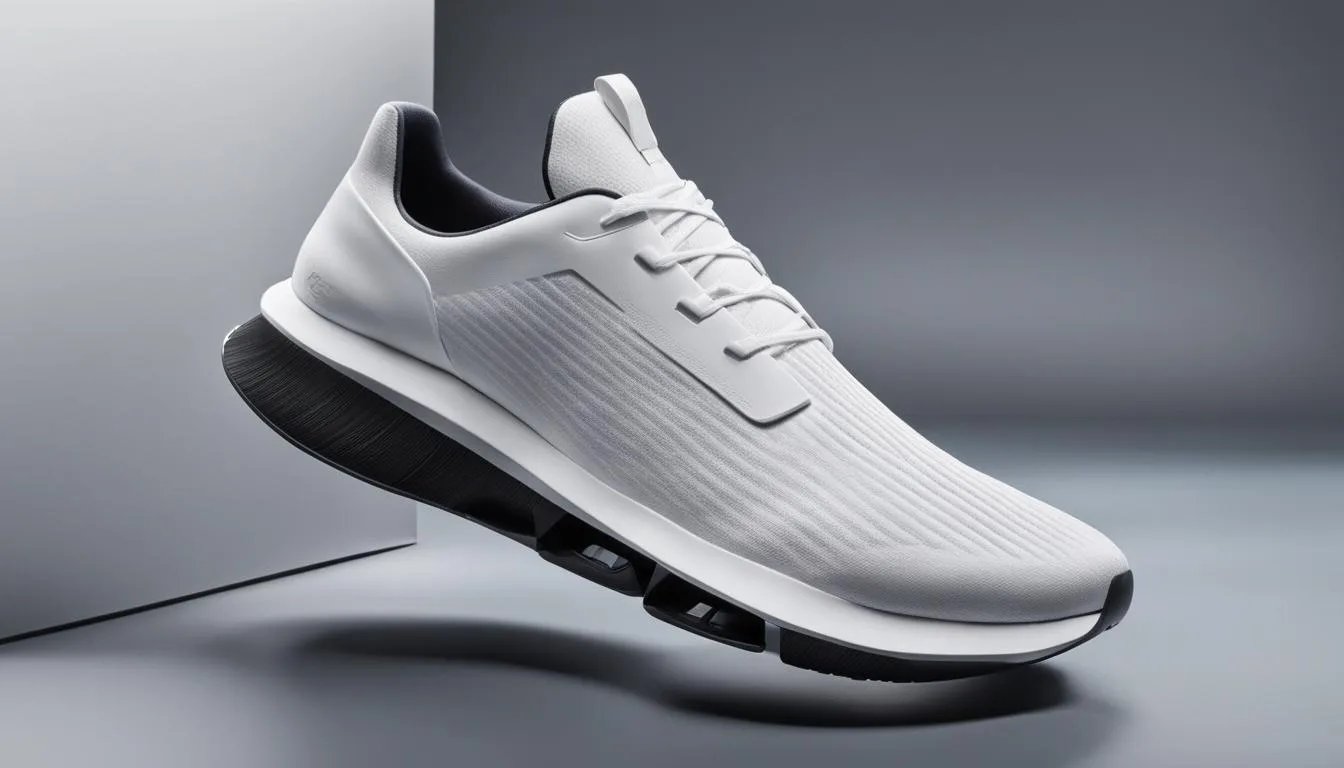
Technological advancements have taken flexible neutral running shoes to new heights, enhancing comfort with innovations in materials and design. Manufacturers like Nike and New Balance employ state-of-the-art foam and cushioning systems to deliver responsive comfort, while others like On and Hoka focus on the integration of CloudTec and EVA foam for shock absorption and energetic rebounds. Technological features have a transformative impact, creating running shoes that cater to both casual and competitive runners seeking advanced comfort without sacrificing performance.
Some of the innovations in flexible neutral running shoe technology can be grouped into three primary categories:
- Midsole cushioning technologies
- Upper materials and construction
- Outsole designs for optimal traction and durability
Let’s take a closer look at these technological advancements and the impacts they’ve had on improving comfort in flexible neutral running shoes.
Midsole Cushioning Technologies
Midsole cushioning has long been a critical element for providing comfort and shock absorption in running shoes. Innovations in this area have led to the development of advanced cushioning systems that enhance comfort and responsiveness. For example:
- Nike React foam: This lightweight and durable foam offers a smooth running experience by providing responsive cushioning and energy return.
- New Balance Fresh Foam: Engineered with hexagonal shapes to allow for precise cushioning, Fresh Foam delivers a plush and stable ride.
- Hoka One One’s Meta-Rocker Geometry: This unique midsole shape encourages a smooth transition from heel to toe, reducing the impact on the joints and allowing for a comfortable stride.
Upper Materials and Construction
The materials and construction of a running shoe’s upper play a significant role in providing a supportive and comfortable fit. Technological advancements in this area have led to:
- Engineered mesh: This lightweight and breathable material is designed to offer excellent ventilation while still providing support.
- Seamless construction: By minimizing the use of seams, the shoes have fewer potential irritation points, leading to a more comfortable fit.
- 3D-printed overlays: These advanced printing techniques enable more precise placement of support structures, ensuring an ideal blend of flexibility and stability.
Outsole Designs for Optimal Traction and Durability
The outsole of a running shoe is crucial for providing traction and durability, as well as contributing to the overall comfort of the shoe. Innovations in outsole technologies include:
| Technology | Description |
|---|---|
| On’s CloudTec cushioning | A system of hollow pods (or “clouds”) on the outsole, designed to compress upon impact and then rebound for a responsive ride. |
| Continental rubber outsoles | Collaboration between shoe manufacturers and tire company Continental, these rubber outsoles provide exceptional grip on a variety of surfaces, improving traction and durability. |
| Strategically placed outsole rubber | Manufacturers place durable rubber compounds in high-wear areas on the outsole to improve longevity and provide optimal grip where it matters the most. |
With all these advancements in materials and design, runners seeking advanced comfort from their flexible neutral running shoes are sure to find a pair that meets their needs. Harnessing the power of cutting-edge technology, manufacturers are continuously improving the performance and comfort of running shoes to provide the ultimate running experience it be for casual runners or competitive athletes.
“read more: Racing Flats Road Running Shoes“
How Flexible Neutral Running Shoes Accommodate Diverse Running Styles
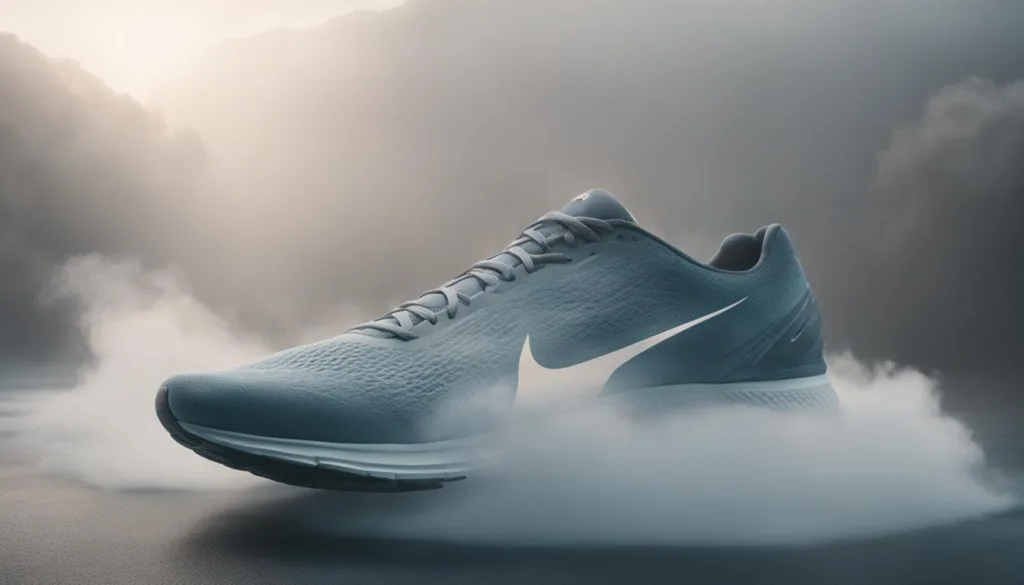
Flexible neutral running shoes are designed to cater to a variety of runners with diverse preferences, running habits, and environments. This versatility is achieved by offering models that can tackle various terrains and meet the needs of runners who require different levels of arch support and pronation control. Let’s explore how neutral running shoes adapt to specific requirements and help you decide which shoe type is right for you.
Types of Running Shoes Neutral for Various Environments
Neutral running shoes come in various models to accommodate specific running environments, ranging from smooth roads to challenging trails. For instance, the Salomon Speedcross is designed for trail running, offering added grip and support for uneven surfaces. On the other hand, the Nike Air Zoom Pegasus provides a stable and cushioned ride for road running. This versatility guarantees you’ll find a neutral running shoe engineered to provide optimal support and comfort, regardless of the surface or conditions.
Flexible Neutral Running Shoes with Arch Support and Pronation Control
While flexible neutral running shoes typically lack the robust arch support found in stability models, they still offer varied levels of pronation control and support tailored to different foot types. This balance caters to a broader audience, including individuals with higher arches who require less intervention or those with mild pronation who can benefit from minimal support. Shoes such as the On Cloudgo and Altra Torin provide design elements that address these needs without overemphasizing corrective structures.
Neutral vs Stable Running Shoes: Which is Right for You?
When choosing between neutral and stable running shoes, it’s crucial to consider personal factors, such as pronation patterns, arch types, and individual responsiveness to cushioning and support levels. Understanding these personal attributes helps you identify the most suitable shoes for your natural running mechanics.
To make an informed decision, consider consulting a professional running shoe specialist or podiatrist for a gait analysis. This assessment can clarify your choice by identifying footwear that aligns with your requirements, prioritizing comfort, and performance while reducing injury risks.
“read also: Daily Trainer Road Running Shoes“
Price vs. Quality: Finding Affordable Flexible Neutral Running Shoes That Last
Finding the perfect balance between cost and quality is an important consideration for many runners when selecting flexible neutral running shoes. It is possible to invest in affordable options without compromising on performance, thanks to the variety of choices available in the market. Brands offer a range of price points, ensuring that there are options for every budget and personal preference.
Some high-quality, yet cost-effective options include well-reviewed shoes like the Karhu Ikoni. However, for those willing to spend more, higher-end shoes such as the ASICS Gel-Nimbus offer exceptional durability and comfort. The key to making a sound investment in your footwear is selecting a shoe that meets your needs in terms of comfort, support, and durability, ultimately allowing you to remain comfortable and injury-free over many miles.
Product research and understanding your running profile are essential when choosing an affordable, high-quality flexible neutral running shoe. By considering your pronation patterns, arch type, and preferences for cushioning and support, you can find a shoe that complements your natural running mechanics. Additionally, consulting with professionals for a gait analysis can provide insights into which shoes are best suited to enhance your comfort, and performance, and minimize injury risk, ensuring that the money you invest in your running shoes is well spent.
“read also: Marathon Road Running Shoes“
In conclusion, Flexible Neutral Running Shoes offer a versatile solution for runners. Whether it’s trail running or road running, these shoes provide the necessary cushioning and support. They accommodate diverse running styles and gait patterns, making them a top choice for many runners.
From the lightweight design of the racing shoe to the high cushioning of the DNA Loft v2, there’s a perfect pair for everyone. Despite the variety, quality doesn’t have to be compromised for price, with affordable options available. So, whether you’re a neutral runner with wider feet or a trail runner seeking comfort, flexible neutral running shoes could be your ideal companion for those long days on your feet.


